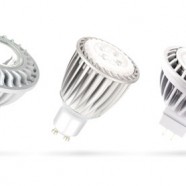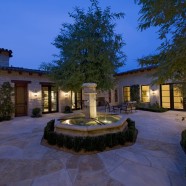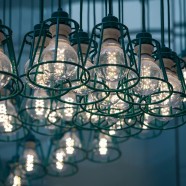8 Benefits of LED Retrofit Lighting
If you’re comparing the costs of retrofitting LED lights to replace your traditional bulbs, the initial cost might be a reason to make you think twice. It’s true, LED, or Light Emitting Diode, lights do cost more in their first installation, but after they’re in they are virtually maintenance free for many years. Besides the benefits of paying a fraction of the cost of your old power bill, you’ll find many more benefits to changing your lighting from incandescent or fluorescent to LED.
Benefit #1: Lower Energy Costs
It can’t be denied that the much smaller energy usage in LED retrofit lighting compared to traditional bulbs makes a powerful argument for LED retrofits in your building. Studies have shown that, in normal daily use, LED lights use a small fraction of the power that traditional bulbs do.
Benefit #2: Long Life
On average, LED bulbs are rated to last 100,000 hours. This means that you can light a building for eight hours each day and you won’t have to replace the bulb for about 20 years. Even if you leave the lights on 24 hours a day, it would take over 11 years for the LED bulb to be exhausted. In addition, these bulbs don’t burn out, leaving you suddenly in the dark. LEDs simply get dimmer and dimmer at the end of their lives, giving you ample warning when it’s finally time to change them.
Benefit #3: Low Voltage
Replacement LED lamps use so little voltage that it’s possible to illuminate the outside of your entire building using the power of a few solar energy panels. This makes them extremely useful for remote areas, plus they’re reliable even in a power outage.
Benefit #4: Greener Light
LED lights contain absolutely no dangerous materials and are 100 percent recyclable. Unlike fluorescent bulbs, which can contain mercury and other dangerous chemicals, LEDs are completely safe and inert.
Benefit #5: Frequent Switching and Instant On
Unlike fluorescent bulbs, which can take half a minute or more to warm up and reach full lighting strength, LED lights are instantly bright the second you turn on the switch.
In addition, you can switch LED lights on and off as frequently and rapidly as you like. This behavior severely affects the life of traditional light bulbs, but it has no effect on LED retrofits.
Benefit #6: Work Well in Extremely Cold Weather
In areas where the outdoor temperature frequently drops below freezing, or in commercial buildings that have cold areas such as freezers, traditional bulbs can pose a challenge: less efficient operation and a shorter lifespan. LED lights work exactly the same whether the environment is 72 degrees or below zero on a daily basis.
Benefit #7: No UV Emissions
For interiors that have light-sensitive furnishings such as antiques in museums, paintings in art galleries, and fabric in historic quilt collections, LED retrofits are much safer to use than traditional bulbs. These lights give off almost no infrared light and virtually no UV emissions, making them the safest lighting choice for your most delicate property.
Benefit #8: Durable and Long-Lasting
LED lights are made of damage resistant materials, and can withstand wind, water, jostling, dropping, and even purposeful vandalism. This makes them ideal for construction sites, outdoor public areas, commercial buildings, and anywhere outdoors that’s frequently subject to severe weather.
Read MoreHow to Upgrade Your Outdoor Lighting to Achieve Energy Savings
One of the best money saving tips you can make to lower your energy bill is to upgrade your outdoor lighting. Switching your lighting from traditional bulbs to more efficient LED lights can save you hundreds of dollars each year. Energy efficiency is the selling point of all LED lighting systems, but these lights can save you money in many different ways. Whether you have safety spotlights on your building or landscape lighting at the base of your property, you’ll enjoy energy savings for multiple reasons when you upgrade them to LED lighting.
Long Life
LED bulbs last about ten times as long as fluorescents, and even longer than that compared to traditional incandescent bulbs. When you’re not running out for light bulbs every few months, the savings can add up.
Durability
Traditional bulbs are built with a fragile filament, which makes them much easier to break. If you have birds pecking at your spotlight or lawnmowers running into your landscape ground lights, they’re apt to break on a regular basis. LEDs are solid, and can withstand a surprising amount of jarring and bumping.
Coolness
LED lights don’t heat up like traditional bulbs do. If your outdoor lights are a part of your landscape design, your expensive shrubbery can get dried out if the heat from the lights is concentrated on them for too long. Allowing your landscape to grow and mature without needing replacement plants is another way you’ll save with LED replacements.
Efficiency
You’ll see the largest energy savings from simple usage when comparing LED bulbs with incandescents or CFL varieties. LED replacements will use a fraction of the power, sometimes as low as 1/30th of the energy usage. While they use up much less power on a daily basis, LEDs are as bright or brighter than the traditional lights you’ll be replacing.
Increased Safety
You may see such large energy savings when you replace your current outdoor lighting with LED bulbs you’ll be able to add more lights around your property. Instead of just shining a light on the driveway or front door, you’ll be able to afford bright safety lights around the entire perimeter. A brighter yard is safer for people to walk around in after dark, and is also a deterrent for burglars and thieves.
Green Technology
LED lights are so efficient that you may be able to remove yours from the grid completely and hook them up to a small solar generator. A few unobtrusive solar cells can capture enough power to run the outdoor lights for many suburban homes. It’s free power to light your property, and a good safety addition in case of power outages.
Read More4 Ways to Use LED Retrofits to Promote Energy Conservation
Advocates of clean technology have long advised LED retrofits for turning your business greener, but they don’t always mention a secondary benefit: the conservation of electricity. Buildings use up about 40 percent of the world’s power every day, and anything you can do to get that number down will give you a positive impact on your bottom line.
Mercy Philadelphia Hospital installed LED exit lights, photo light controls, and other LED retrofits, and they’re now saving over $20,000 a year in energy costs. You don’t have to own a hospital or other large business to see savings and energy conservation with LED retrofits. Even small changes can make a noticeable difference on your bottom line.
Holiday Decorations
The increase in your power bill in December isn’t completely due to the lower temperatures. Many businesses make a point of decorating their buildings for the holidays. Depending on the amount of lights and ornaments you use, you can save a significant amount of energy for the month by using LED lights instead of the traditional incandescent variety.
Older style lights use about 40 watts per string, while LED lights are much lower, using about 4.8. Your total savings depend on your Christmas cheer and how much you want to celebrate with the neighborhood, but typical savings can run from $10 in the hundreds of dollars for the month of December.
Outdoor Lighting
Apartment complexes, nursing homes, and small business can all reduce their energy usage by installing LED retrofits into their existing outdoor lighting schemes. Buildings with landscape feature lighting, lights along pathways, spotlights to illuminate walkways and expanses of grass, and motion sensor anti-crime devices can all benefit from being changed over to a set of LED bulbs.
Changing out 200 typical incandescent bulbs can save enough energy in one year to power the average home in the United States for that same year. In addition, since LED bulbs last about 20 times as long as incandescent varieties, you’ll save time and money on labor for changing burnt out bulbs.
Parking Lot Lighting
Many parking lots suffer from dark corners and edges while the center is almost too bright underneath the traditional lights. Switching to LED parking lot lights can solve this problem, as the light from these bulbs diffuses more evenly underneath the area in which they’re installed. Switching out your bulbs to LEDs will give you more uniform lighting to increase lot safety, as well as saving a significant amount of energy on a monthly basis.
You can find additional savings by installing bi-level controls on your LED lights. These lights run normally at a dimmer level, then brighten up considerably when motion detectors sense movement in the lot beneath. Your lot will still be constantly lit, unlike with typical motion sensors, but you’ll save energy by not having the lights at full power all night long.
Indoors
You may see the largest savings of all by doing LED retrofits inside your business. Businesses across the country are seeing amazing energy savings simply by switching out their old traditional bulbs for more efficient LED versions. GM’s Lordstown, Ohio, complex is currently undergoing the world’s largest LED retrofit project. With about a third of the project done, GM has already seen an 80 percent drop in energy usage in one factory in the complex.
It’s doubtful that you have as many lights in your business as GM does in theirs, but you can perform the same LED retrofit on a smaller scale and still see the same type of energy savings.
Read More



Recent Comments